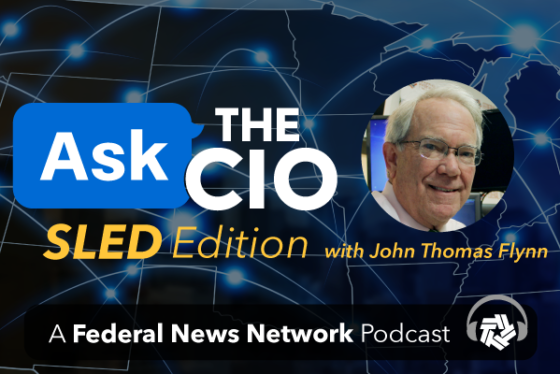
NASCIO publishes 2018 state CIO survey
Gone are the days where state CIOs are primarily focused on IT infrastructure. CIOs ranked communication, relationship-building and strategic thinking as the...
 A regular highlight of the NASCIO Annual Conference has been the release of the State CIO Survey. Analyzing trends and identifying developing issues has always been a popular exercise with state CIOs and the 2018 version was no different.
A regular highlight of the NASCIO Annual Conference has been the release of the State CIO Survey. Analyzing trends and identifying developing issues has always been a popular exercise with state CIOs and the 2018 version was no different.
For an organization just one year short of its golden anniversary, NASCIO has certainly changed.
“Gone are the days where state CIOs are primarily focused on IT infrastructure,” the report states. “When asked, CIOs consistently ranked communication, relationship-building and strategic thinking as the most critical leadership traits for a successful CIO. In contrast, technology expertise came in at number nine. (Italics mine)”
Prepared with the assistance of Grant Thornton and CompTIA, this ninth annual state CIO survey presented the results from all 50 states who participated. No mean feat in and of itself.
The survey cover reflects this transformation with the title, “The CIO as Communicator.” With the upcoming November elections, the survey was an opportunity for state CIOs to offer advice to the next generation of technology leadership. The predominant guidance “was the need to build strong relationships with key stakeholders at the governor’s office, agency and legislative level, and to develop a strong understanding of the budget process and relationships with the budget office.”
With those relationships and budgetary expertise in place, the CIOs recommended a focus on enterprise thinking for business value, security and risk management, and agency customer service.
The survey also noted the continued movement away from traditional waterfall lifecycle software development toward a more modular approach with “rapid delivery of software in an incremental fashion, often using Agile software development techniques.”
In addition to changing software development lifecycle models, “the funding, procurement and contracting model used by the state can be an even greater influence on project approach … in planning and executing legacy modernization initiatives in state government.”
As an example, the report states that “legacy modernization projects are increasingly structured around modular or incremental deployment of functionality, versus a large monolithic Design Development and Implementation (DD&I) phase. Almost two-thirds of states are already using such approaches, with another quarter either planning or considering their use. A major driver of modular approaches across states is the federal government and their push for incremental funding of modernizations for federally funded programs such as Medicaid.”
CIOs were asked whether their states were adopting this new modular approach for modular procurement and contracting for legacy modernization projects. They reported that, “in addition to the 48 percent currently employing the practice, 40 percent are either planning or considering it, so it could soon become as commonplace.” Lessons learned included the critical importance of the education of stakeholders, including the legislature, and most interestingly, “the additional complexity of procurements and contracting can push a system integrator role on to the state even if the state is not prepared to take on such a role.”
The report also highlighted the “needs, benefits, and solutions of an effective digital transformation strategy.” An effective strategy must be collaborative, multi-agency and “should include agency directors, deputy directors, and other program leaders.” This of course can also be said about just about everything the CIO must do.
The survey also addresses digital strategy leadership. “While the survey respondents were evenly split on the question of the state CIO being responsible for executing a digital strategy for the state, they were overwhelmingly in agreement that the state CIO should take a leadership role in digital efforts.”
Finally, regarding the area of emerging IT, big changes were reported with 57 percent of CIOs choosing artificial intelligence as the most impactful in the next 3 to 5 years. This was almost double that of last year’s survey. And while interest in the internet of things (IoT) fell from 43 percent to 27 percent, plans to deploy automation software were cited by a “full 44 percent who replied that these efforts were complete, in-progress or planned.”
Copyright © 2024 Federal News Network. All rights reserved. This website is not intended for users located within the European Economic Area.






